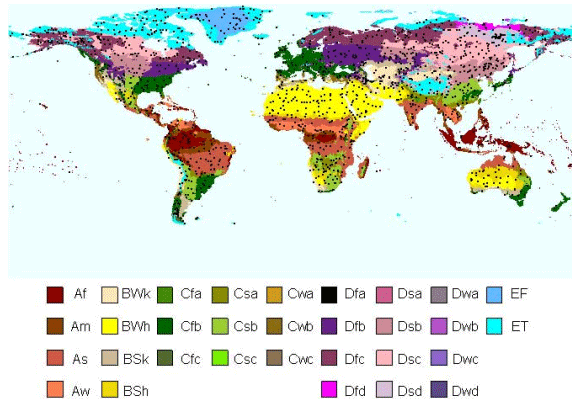Large-scale hydrological drought studies have demonstrated spatial and temporal patterns in observed trends and considerable difference exists among global hydrological models in their ability to reproduce these patterns. A controlled modeling experiment has been set up to systematically explore the role of climate and physical catchment structure (soils and groundwater systems) to better understand underlying drought-generating mechanisms. Daily climate data (1958–2001) of 1495 grid cells across the world were selected that represent Koppen-Geiger major climate types. These data were fed into a hydrological model. Nine realizations of physical catchment structure were defined for each grid cell, i.e. three soils with different soil moisture supply capacity and three groundwater systems (quickly-, intermediary- and slowly-responding). Hydrological drought characteristics (number, duration and standardized deficit volume) were identified from time series of daily discharge. Summary statistics showed that the equatorial and temperate climate types (A- and C-climates) had about twice as many drought events as the arid and polar types (B- and E-climates) and the duration of more extreme droughts were about half the length. Soils were found to have a minor effect on hydrological drought characteristics, whereas groundwater systems had major impact. Groundwater systems strongly controlled the hydrological drought characteristics of all climate types, but particularly those of the wetter A-, C- and D-climates because of higher recharge. The median number of drought for quickly-responding groundwater systems was about three times higher than for slowly-responding systems, which substantially affected the duration. Bivariate probability distributions of drought duration and standardized deficit for combinations of climate, soil and groundwater system showed that responsiveness of groundwater systems is as important as climate for hydrological drought development.
Hydrological drought across the world: impact of climate and physical catchment structure

